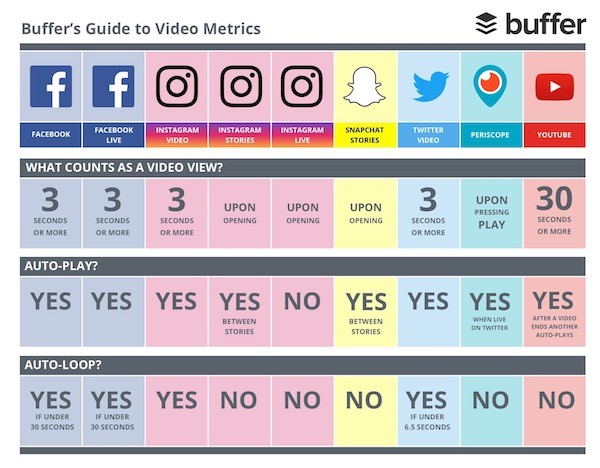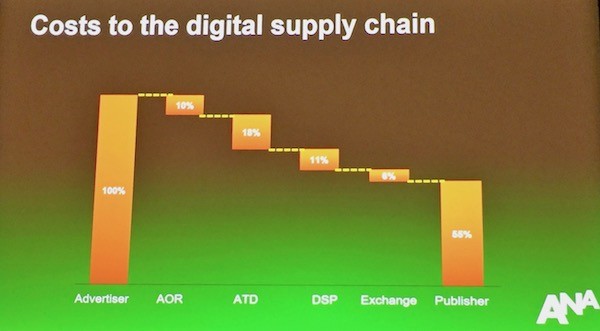Since the release of the ANA K2 Report on Media Transparency and now with Marc Pritchard, CMO of Procter & Gamble and Chairman of the ANA calling on the digital media industry to sort out their industry, many advertisers are in the difficult situation of knowing the need to address this issue but equally confused as to what to do first.
Part of this is due to the complex nature of the digital media buying value chain, but it is also a fear of any changes revealing where they were possibly getting it wrong.
Just as FOMO (Fear Of Missing Out) will often drive marketers into action when it comes to embracing new technology like Virtual and Augmented Reality, FOBFO (Fear Of Being Found Out) is often paralysing some advertisers from making the changes they need to make in the context of the very public statements of where digital media is failing.
Beautifully summed up in a conversation with one marketer who said “It’s like I’m driving a car at night with the lights off, I cannot see the road ahead or even where I am going. But all I can hear is the voice of the agency coming from the back seat telling me to go faster”.
Lets look at what is creating this darkness and fear and more importantly what can marketers and advertisers do to take control of the situation and get it sorted out.
Lack of transparency
When the story first broke in the US with the ex-CEO of MediaCom publicly declaring that the agencies had been accepting kick-backs and rebates for years, the initial focus was on the transparency of the media agency financial arrangements. But this overshadowed some of the longer term and bigger transparency issues associated with digital media buying, being viewability, consistent metrics and digital fraud.
Lets look at each of these, along with the issue that kicked it off, being hidden rebates.
Digital Metrics
In the past 12 months, Facebook, Snapchat and Twitter have all reported anomalies and errors in the performance metrics of their social media platform. While I read that some agency pundits dismiss this as inconsequential, the fact is that without consistent or reliable metrics it becomes incredibly difficult for agencies and advertisers to assess the value and the performance of their media investment.
By mid 2016, Professor Mark Ritson had already called bullshit on many of the video media metrics doing the rounds, but it appears that beyond reliability is the issue of consistency of metric. Unlike traditional media who have developed consistent like for like metrics, the digital and social media have inconsistent approaches to measurement leading to inconsistent reporting and difficulty in calculating value and effectiveness.
Viewability
The same lack of consistency applies to the issue of viewability. The issue is that just because your ad is served it does not mean it will actually be seen by a real person. Either the ad is not served before the click away from the page or it is served but to a part of the screen they do not look at, or even worse it is served to a non-human, set up to appear like a real person but in fact is simply a piece of software and the ad is served to no-one and you are charged for it.
It is estimated that less than half of all digital advertising served is actually seen by a real person. This means that potentially half of those eyeballs you are paying for either never see your ad or that they never really existed in the first place. It smacks of John Wanamaker’s quote about half advertising costs are wasted, but in this case we know that it is highly likely rather than just a cynical response about the cost and performance of the advertising investment.
Digital Fraud
Part of the viewability issue is due to the fact that organised cyber crime groups and terrorist organisations are able to make significant revenue defrauding significant percentages of your digital media spend. There are a variety of ways these clever criminals do this and the problem is they are changing their techniques all the time to stay one step ahead of the industry.
Just recently it was discovered that they had created news sites in Eastern Europe and Russia that mimicked legitimate and reputable news sites in the west. They then build up significant traffic to these sites using fake social media accounts and software bots to create the appearance of millions of real readers.
This is simply to attract advertisers and their millions of dollars in digital advertising. It is also how well known brands can end up having their ads appear on websites for terrorist organisations and criminal activities creating a public relations nightmare.
Rebates, Kickbacks and Commissions
This brings us back to the issue of hidden costs, mark ups, kick-backs and the like. But while you may think that it was all about the media agency, the fact is there are a number of players involved in each digital advertising transaction and each one has their hand out for your money along the way.
The problem is that with such a complex value chain it is often not very transparent about where your media budget is going.
Some conservative estimates place it as around 50% of your media cost is held by parties on the value chain, with half of the spend actually going to the digital publisher providing the advertising opportunity. The complexity of the process and the lack of transparency in the way your funds are split means it can be extremely difficult calculating what your digital media budget is buying.
In fact the ANA K2 Report on Media Transparency said that potentially up to 90% of your digital media budget is wasted and not delivering the value you were paying for and certainly not getting.
What to do about it
It is a scary proposition. Much like driving a car at night, on the highway, without lights, having no idea where you are or where you are heading or how fast you are going or if you are going to crash at any second.
You could simply stop doing what you are doing, which would potentially draw a lot of attention to you and the reason why you stopped investing in digital media.
You could ignore it and hope that no one asks any questions, but with all of the industry media coverage and discussion it is unlikely to happen and besides even if 20% of your digital media budget is being wasted that is too much already.
But here are three things you could do without raising too much attention that would immediately impact on your digital media performance.
- On the basis that your digital investment has increased, you simply undertake a review of your contractual arrangements with your media agency, programmatic trading desk and your verification company. Depending on your spend level it is certainly worthwhile to update your media contracts to reflect the current business practices and address the issues. One of the key areas is having direct contractual arrangements with your programmatic trading desk and your media verification company, rather than maintaining this through a much less accountable third party agreement.
- Review your media processes including metric and budget setting, briefing and importantly your media metrics. The traditional media metrics such as reach, frequency, share of voice and the like are no longer relevant in digital media. Similarly, many of the metrics used to replace them are often inconsistent and misleading. Therefore you could re-frame your objective and budget setting, briefing and performance measurement as part of a total media value optimisation. Implemented properly it will show an immediate performance benefit that makes any advertiser look good.
- Next is to sort out the money. This includes your media investment, return on the media investment and agency remuneration and cost. Digital media is the ideal performance media when used correctly. If you change your performance metrics in step two, then next you need to ensure that the media agency is incentivised on delivering the results you need. Agency remuneration is more than just paying for services, it can also be used to incentivise performance and results.
In the past three years we have been helping advertisers achieve optimised media value, transparency and performance by reviewing and improving each of these three steps. Rather than suffer FOBFO, we can help you address these issues and deliver the results you need.
No more driving in the dark. We can illuminate your media process and show you how to get back in control of your media budget.
TrinityP3’s Media Transparency, Performance and Value Assessment takes a holistic look at the operation of your media agency, assessing against best practice at every stage of the journey. It aims to give you the tools to improve the output of your media agency.
Why do you need this service? Learn more here






